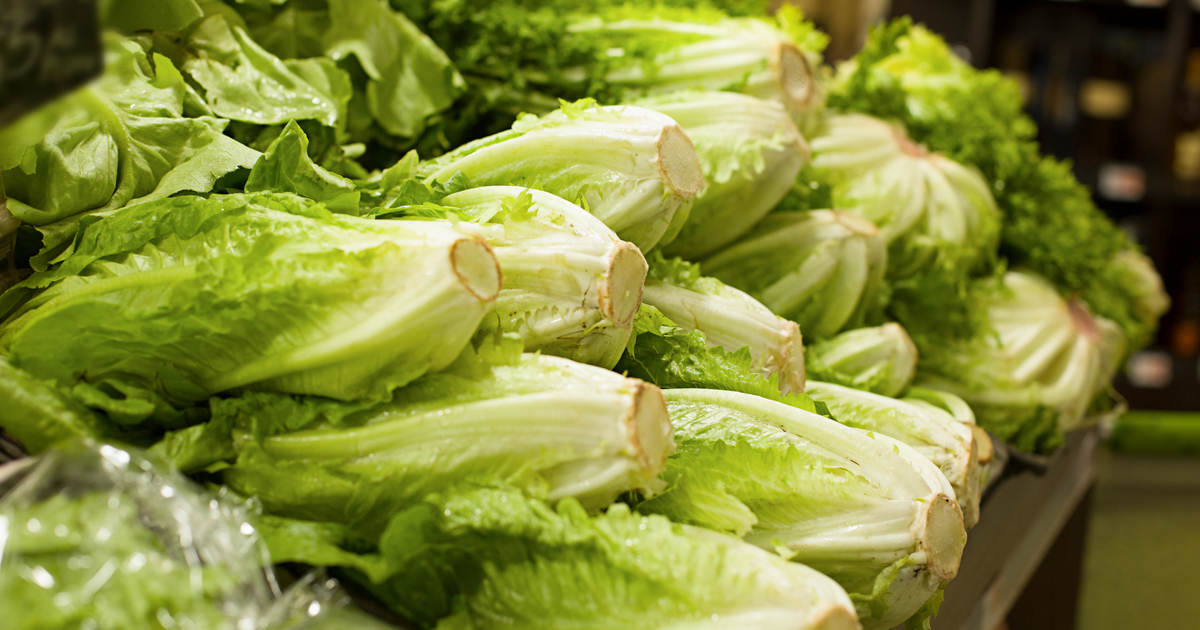4 Things to Know About the Romaine Lettuce Outbreak
Click Here to Manage Email Alerts

The CDC announced a multistate outbreak of Escherichia coli 0157:H7 infections linked to romaine lettuce harvested from the growing region in Salinas, California.
Two similar multistate outbreaks last year were linked to romaine lettuce harvested from growing regions in Arizona and California, leading to changes in how the leafy greens are labeled in the United States.
Infectious Disease News compiled a list of things to know about the current outbreak and treating patients with suspected E. coli 0157:H7 infections. – by Marley Ghizzone
1. Outbreak information

The multistate outbreak spans 16 states. A total of 40 cases have been reported, including 28 hospitalizations. Of those hospitalized, five developed hemolytic uremic syndrome (HUS). No deaths have been reported, according to the CDC. One company, Missa Bay, has recalled more than 75,000 pounds of salad products due to potential contamination, according to the U.S. Department of Agriculture.
2. Check the label
According to the CDC, most romaine lettuce products now include a label showing the harvest location, making it easier to identify where the lettuce was grown. This is the result of producers and distributors agreeing last year to label lettuce entering the market with the location and date of harvest.
“For patients who have questions about the multistate outbreak of E. coli infections linked to romaine, clinicians can emphasize CDC’s advice to not eat or buy any romaine lettuce harvested from the Salinas, California, growing region,” Laura Gieraltowski, PhD, MPH, foodborne disease outbreak lead at the CDC, told Healio. “Most romaine products are labeled with a harvest location showing where they were grown, but if you don’t know where the romaine lettuce in your home or at the store or restaurant was grown, don’t eat it or buy it.”
This advice should be applied to whole heads of romaine and hearts of romaine, as well as packages of precut lettuce and salad mixes that contain romaine.
3. Symptoms
Symptoms of a Shiga toxin-producing E. coli (STEC) infection usually appear within 2 to 8 days of consumption and often include severe stomach cramps, diarrhea and vomiting, according to the CDC. The diarrhea is often bloody. Patients also may have a fever, though usually not higher than 101°F.
4. Testing and treatment
E coli infection is typically diagnosed via a stool sample test, the CDC noted. The agency underscored that diagnostic testing should be performed before antibiotics are prescribed to a patient with a suspected E. coli infection.
“Antibiotics are not recommended for patients with suspected E. coli infections until diagnostic testing can be performed and E. coli infection is ruled out,” Gieraltowski said.
“Some studies have shown that administering antibiotics to patients with E. coli infections might increase their risk of developing HUS”— which occurs in 5% to 10% of patients with diagnosed STEC infections — “and a benefit of treatment has not been clearly demonstrated,” she said.
Reference:
CDC. Outbreak of E. coli Infections Linked to Romaine Lettuce. https://www.cdc.gov/ecoli/2019/o157h7-11-19/index.html. Accessed November 25, 2019.
USDA. Missa Bay, LLC recalls salad products due to possible E. coli O157:H7 contamination. https://www.fsis.usda.gov/wps/portal/fsis/topics/recalls-and-public-health-alerts/recall-case-archive/archive/2019/recall-115-2019-release. Accessed November 25, 2019.
Disclosure: Gieraltowski reports no relevant financial disclosures.
